
Terrapin Station is the ninth studio album by the Grateful Dead, released July 27, 1977. It was the first Grateful Dead album on Arista Records and the first studio album after the band returned to live touring.

The Arista Years is a compilation album that chronicles the Grateful Dead's studio and live albums during their time with Arista Records. The album was released on two-CD and two cassette tapes on October 15, 1996. It contains tracks from Terrapin Station, Shakedown Street, Go to Heaven, Reckoning, Dead Set, In the Dark, Built to Last, and Without a Net. The set does not contain any new or expanded recordings. A media outlet sampler, Selections from the Arista Years, was released by Arista in January 1997.

Selections from the Arista Years is a compilation album that chronicles the Grateful Dead's studio and live albums during their time with Arista Records. This is a one-CD sampler sent to radio stations, record stores, and print media outlets by Arista to promote The Arista Years, which had come out several months earlier. As with The Arista Years, the album contains tracks from Terrapin Station, Shakedown Street, Go to Heaven, In the Dark, and Built to Last, and does not contain any new or expanded recordings.

Dick's Picks Volume 3 is the third live album in the Dick's Picks series by the Grateful Dead. It was recorded on May 22, 1977, at the Sportatorium in Pembroke Pines, Florida. It was released in November 1995 on Grateful Dead Records.

The Closing of Winterland is a four-CD live album by the Grateful Dead. It contains the complete concert performed on December 31, 1978. The concert was also released as a two-disc DVD. The title derives from the fact that it was the last concert in San Francisco's Winterland Arena, which was shut down shortly thereafter. The Dead celebrated the closing as an approximately five-hour-long party and invited some guests including guitarist John Cipollina of Quicksilver Messenger Service and Ken Kesey as well as actor Dan Aykroyd who provided the midnight countdown. It was certified Double Platinum by the RIAA on December 15, 2003 under the category of longform video, selling 200,000 units. The New Riders of the Purple Sage and Blues Brothers opened the show.
"Shakedown Street" is a song by the Grateful Dead. It was written by lyricist Robert Hunter and composed by guitarist Jerry Garcia. It was released as the title track on the album Shakedown Street in November 1978. The song was first performed live on August 31, 1978, at the Red Rocks Amphitheatre, in Morrison, Colorado. The song "From the Heart of Me" was also played for the first time during the performance. The album Shakedown Street reached number 41 on the Billboard Top 200 for 1979.

Road Trips Volume 1 Number 4 is a two-CD live album by the American rock band the Grateful Dead. The fourth in their "Road Trips" series of albums, it was released on September 30, 2008. It was recorded at the Winterland Arena in San Francisco, California, on October 21 and 22, 1978.

Rocking the Cradle: Egypt 1978 is a live album by American rock band the Grateful Dead. It contains two CDs and one DVD and was released in 2008. The album was recorded September 15 & 16, 1978, at the Giza pyramid complex in Giza, Egypt. This was the third continent on which the band performed, having previously performed in Europe. The shows on the album were recorded on a 24-track multitrack recorder and were mixed down to stereo for the album's release.

To Terrapin: Hartford '77 is a live album by the American rock band the Grateful Dead. It was recorded at the Hartford Civic Center in Hartford, Connecticut, on May 28, 1977, the last show of the band's 26-date East Coast tour in the spring of 1977. It was released by Rhino Records on April 7, 2009.

Winterland June 1977: The Complete Recordings is a 9 CD live album by the American rock band the Grateful Dead. It contains three complete concerts. It was recorded on June 7, 8, and 9, 1977, at the Winterland Ballroom in San Francisco, California. The album was released on October 1, 2009.

May 1977 is a live album by the rock band the Grateful Dead. It contains five complete concerts, on 14 CDs. It was recorded at five consecutive shows, from May 11–17, 1977. Packaged as a box set, it includes a booklet with a historical essay and photos from the concerts, along with individual liner notes for each show. Produced as a limited edition of 15,000 numbered copies, it was released on June 11, 2013.

Dave's Picks Volume 7 is a three-CD live album by the rock band the Grateful Dead. It contains the complete concert from April 24, 1978, at the Horton Field House, Illinois State University, in Normal, Illinois. It was produced as a limited edition of 13,000 numbered copies, and was released on August 1, 2013.

Dave's Picks Volume 12 is a three-CD live album by the rock band the Grateful Dead. It contains the complete concert recorded on November 4, 1977 at Colgate University in Hamilton, New York. It was produced as a limited edition of 14,000 numbered copies, and was released by Rhino Records on November 1, 2014. The album also includes over 75 minutes of bonus tracks recorded on November 2, 1977 at a concert at Seneca College in Toronto.

30 Trips Around the Sun is an 80-CD live album, packaged as a box set, by the rock band the Grateful Dead. Announced for the celebration of their 50th anniversary, it consists of 30 complete, previously unreleased concerts, with one show per year from 1966 through 1995. Comprising 73 hours of music, the box set is individually numbered and limited to 6,500 copies. It was released on October 7, 2015.
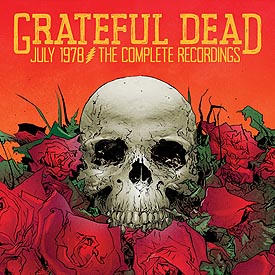
July 1978: The Complete Recordings is a live album by the rock band the Grateful Dead. Packaged as a box set, and produced as a limited edition of 15,000 copies, it contains five complete concerts on twelve CDs. It was released on May 13, 2016.
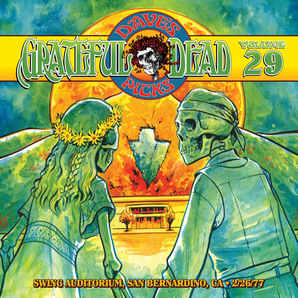
Dave's Picks Volume 29 is a three-CD live album by the rock band the Grateful Dead. It contains the complete concert recorded on February 26, 1977 at Swing Auditorium in San Bernardino, California, and three bonus tracks from February 27, 1977. It was produced as a limited edition of 20,000 copies, and released on February 1, 2019.
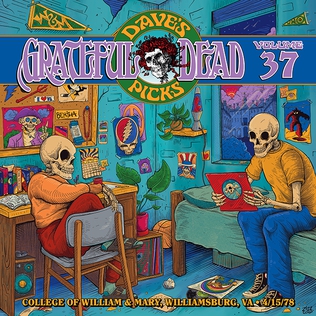
Dave's Picks Volume 37 is a three-CD live album by the rock band the Grateful Dead. It contains the complete concert recorded on April 15, 1978, at the College of William & Mary in Williamsburg, Virginia, as well as selections from the April 18 concert at the Civic Arena in Pittsburgh, Pennsylvania. It was released on January 29, 2021, in a limited edition of 25,000 copies.
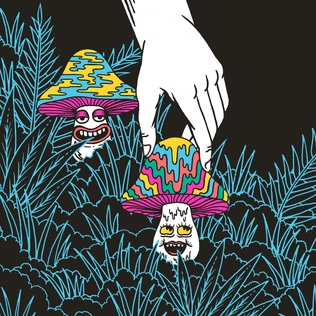
In and Out of the Garden: Madison Square Garden '81, '82, '83 is a live album by the rock band the Grateful Dead. Packaged as a box set, it contains six complete concerts on 17 CDs. It was recorded at Madison Square Garden in New York City in 1981, 1982, and 1983. It was released on September 23, 2022, in a limited edition of 12,500 numbered copies.
"Terrapin Part 1" is a song suite by the Grateful Dead. Released on their 1977 album Terrapin Station, it takes up the album's entire second side. The piece, split up into seven distinct movements, is the band's longest studio recording at sixteen minutes and twenty-three seconds long. While the Grateful Dead never performed the song live in full, the first three sections of the song became commonplace in the band's setlists. The song's lyrics were written by Robert Hunter, with the music being written by Jerry Garcia, Mickey Hart, and Bill Kreutzmann.
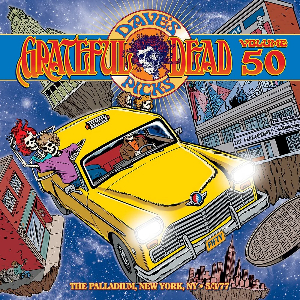
Dave's Picks Volume 50 is a three-CD live album by the rock band Grateful Dead. It features the complete concert recorded on May 3, 1977, at the Palladium in New York City, plus bonus tracks from the first set of the following night's show at the same venue. The album was released on April 26, 2024, in a limited edition of 25,000 copies.

















